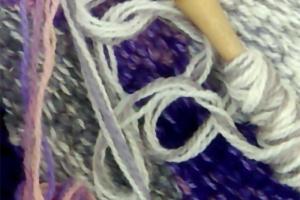What do new museum educators go through? How do they find their way?

"A New Role for Museum Educators" shows how learning happens in communities, how volunteers and professionals approach their work, the underlying principles and philosophies that guide the work of museum education, and how these practices are always evolving to remain relevant.
New to the field of museum education?
As the field of museum education continues to evolve, it is important to understand the experiences of people entering the profession. In her chapter "Finding One’s Way as a Novice Art Museum Educator," Assistant Professor of Art & Museum Studies Ashley Mask asks "What do new educators go through, and what helps them navigate their way?"
Mask's chapter centers the stories of three novice art museum educators in order to provoke and produce new ways of understanding how novice art museum educators find their way in the field. It illuminates how (un)welcoming they found museum spaces as well as how personal agency, relational autonomy, reflexivity in practice, and workplace culture played important roles in their wayfinding.
About the book
From the publisher: Museum education in its most expansive definition is about communicating messages, creating learning experiences, and, at its most aspirational, promoting human development for people of all backgrounds, abilities, and circumstances. This edited volume revisits the legacy of museum education practices, reflecting on the changing context of community and the role of cultural institutions, and provides insights into new directions that museums can take with a visitor-centered mindset. It provides foundational concepts around educational philosophies that guide practice, applied methods and approaches for implementation, and the ethos of an educational institution intended to support community learning and engagement that are essential to provide for the wide-ranging needs of all audiences. International perspectives from a variety of museums are considered, including art museums, children’s museums, history museums and historic sites, science museums, botanical gardens, zoos, and aquariums. Chapters include thought-provoking reflections on contemporary practices, concrete examples from across the globe, and useful tools for anyone working with public audiences.





